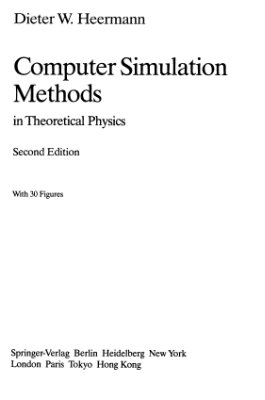Second Edition, 1989
The new and exciting field of computational science, and in particular simulational science, has seen rapid change since the first edition of this book came out. New methods have been found, fresh points of view have emerged, and features hidden so far have been uncovered. Almost all the methods presented in the first addition have seen such a development, though the basics have remained the same. But not just the methods have undergone change, also the algorithms. While the scalar computer was in prevalent use at the time the book was conceived, today pipeline computers are widely used to perform simulations. This brings with it some change in the algorithms.
The new and exciting field of computational science, and in particular simulational science, has seen rapid change since the first edition of this book came out. New methods have been found, fresh points of view have emerged, and features hidden so far have been uncovered. Almost all the methods presented in the first addition have seen such a development, though the basics have remained the same. But not just the methods have undergone change, also the algorithms. While the scalar computer was in prevalent use at the time the book was conceived, today pipeline computers are widely used to perform simulations. This brings with it some change in the algorithms.

